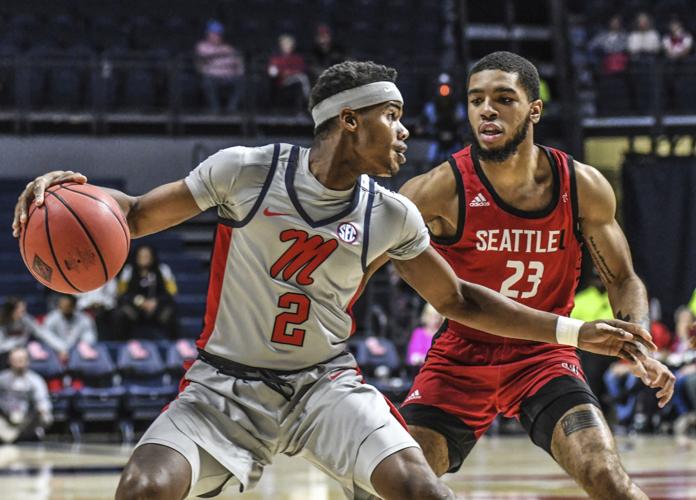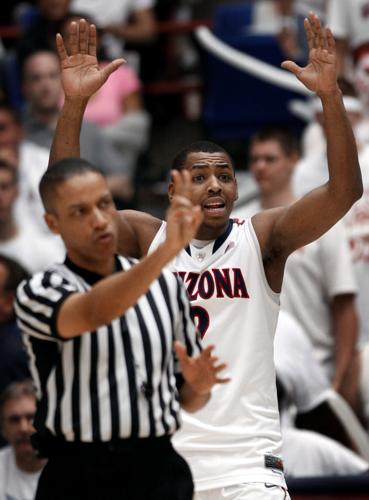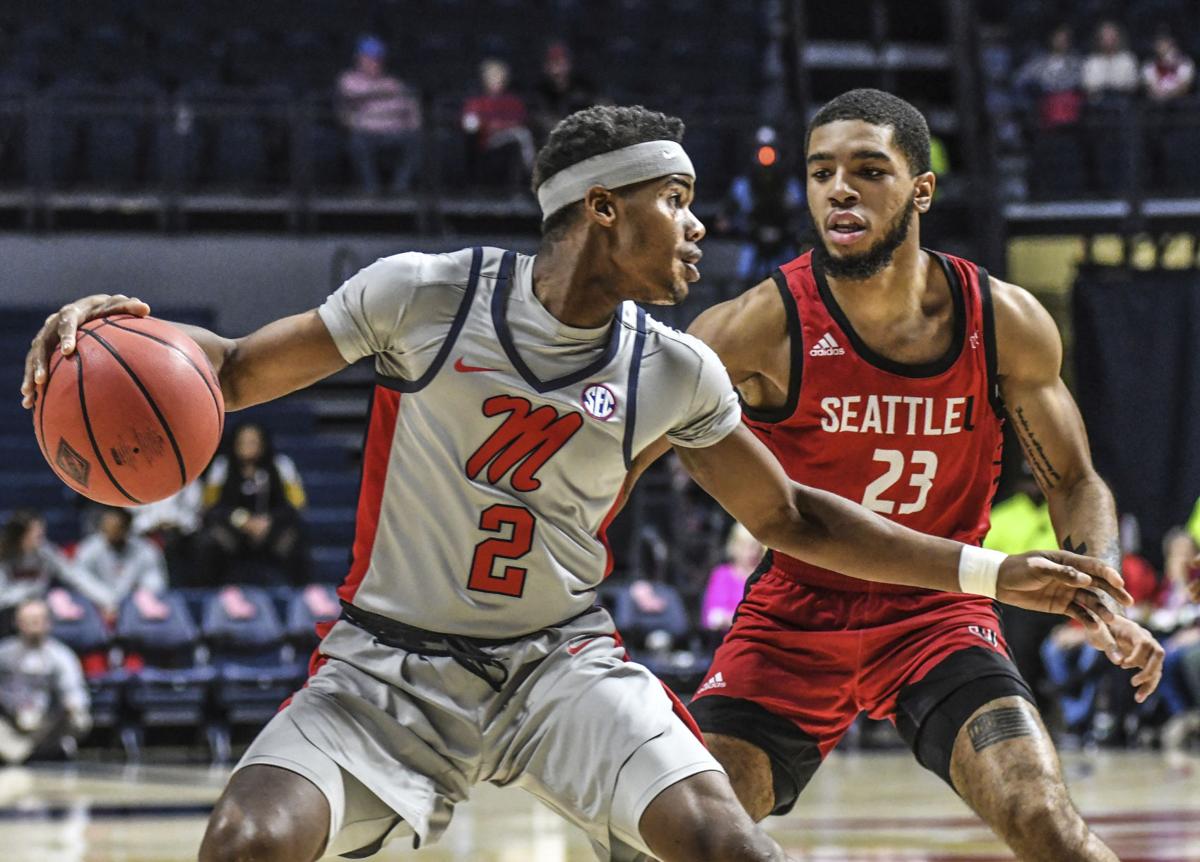The NCAA’s graduate transfer rule was created in 2006, and Exhibit A of its potential was the move by Arizona State guard Kevin Kruger to UNLV.
A modestly successful guard for the Sun Devils, Kruger left ASU after it fired coach Rob Evans. His landing point was a no-brainer: Kruger’s father, Lon, was in his third season as UNLV’s coach.
Their one season together at UNLV had a fairy-tale touch: Kruger filled the Rebels’ void, averaging 13 points per game as UNLV went 30-7 and reached the Sweet 16.
That was an idyllic example of how the grad transfer rule could benefit both parties. But in the years since, the grad transfer system has mostly been a landing spot for smaller-school stars who found themselves a bit over their head, reduced to diminished roles.
Except for dynamic point guard Mark Lyons of Xavier — the best player on Arizona’s 2013 Sweet 16 team — the Wildcats have mostly stalled with grad transfers in the lineup.

Grad transfers typically see a drop-off in production at their new schools.Mark Lyons, the best player on the 2013 UA team, was an exception.
It is not a quick fix at all, with few exceptions here or anywhere. It has been similar to a baseball general manager examining the waiver wire, or Triple-A rosters, hoping to find a hidden gem.
The newest basketball player on Sean Miller’s roster is Terrell Brown, a graduate transfer from Seattle University, a volume shooter of such extent that he attempted more shots last season than anyone in Arizona history.
Brown, a combo guard, attempted 18.8 shots per game for the Redhawks. For some context, here are the five leading alpha-dog shooters in UA history:
- Michael Dickerson, 16.6 in 1996-97
- Khalid Reeves, 16.3 in 1993-94
- Jason Terry, 16.2 in 1998-99
- Damon Stoudamire, 15.5 in 1994-95
- Sean Elliott, 15.0 in 1988-89
Brown finished fifth nationally in shots attempted, behind shoot-first players from UTSA, Detroit Mercy, Columbia and Marquette.
So I ask: Did Brown do enough research before agreeing to play for Arizona? Is he really willing to be a role player? Did he speak with Max Hazzard? Did he do his homework on UA transfer guard James Akinjo?
When Hazzard became a grad transfer a year ago, leaving the green-light role he earned at UC Irvine, he told a California reporter: “They were down the past year and I like my chances to come in and fulfill a key role and hopefully get them back to Arizona basketball, where it belongs.”
Oops. Hazzard went from averaging 12.5 points per game at Irvine to 5.3 at Arizona. His minutes dropped from 26 per game to 14. He was famously benched during a collapse at Arizona State for taking an ill-advised shot late in the first half.
And then there’s Akinjo, a transfer from Georgetown who became the subject of a rant by Syracuse coach Jim Boeheim, who said “they got rid of a guy who wouldn’t pass the ball to anybody and just shot every time. I watched him play three games. He lost two of those games by himself.”
That’s not the normal public comment by a coach on an opposing player, but these aren’t normal times at Arizona. Expecting Brown and Akinjo to join forces and play in harmony in Miller’s deliberate offense reflects the desperate times of Arizona’s basketball program.
My advice to Brown, as with Akinjo: Be unselfish and adaptable. Don’t expect a Final Four. Arizona’s run at the elite level of college basketball is on hiatus.
Brown’s shooting percentages at Seattle are a cause for concern: He shot 29% from 3-point distance and 41% overall.
When Stoudamire attempted a career-high 15.5 shots in his senior year at Arizona, he shot 46% from 3-point range and 47% overall.
Can Brown be the exception, a grad transfer who becomes an NBA prospect and all-conference player, perhaps saving Miller’s job in the process?
The odds are against it. Other than Arizona’s Lyons, the only other grad transfer to make the All-Pac-12 first team was Utah guard Justin Bibbins, who helped an unranked Utes team to the NIT after leaving Long Beach State.
Other than Bibbins and Lyons, the top grad transfer in the league was probably Oregon distance shooter Jason Calliste, who shot 50% from 3-point range and averaged 12.7 points for the 2013-14 Ducks, even though he didn’t crack Oregon’s starting lineup.
It’s so difficult to step up a class in college basketball that most of Arizona’s grad transfers have failed to crack double digits in scoring per game.
Mark Tollefsen averaged 7.0 points per game in his one season at the UA after transferring from San Francisco. Ryan Luther averaged 9.0 points per game in 2018-19 after transferring from Pitt, and teammate Justin Coleman averaged 8.0 per game after coming to Tucson from Samford.
Stone Gettings, a grad transfer who played on this year’s team after leaving Cornell, averaged 6.6 points per game. That’s an average of 7.6 points per game as Wildcats. The four’s cumulative scoring average a year before moving to Tucson was 14.4 per game.
It’s a typical grad-transfer reduction. USC guard Quinton Adlesh from Columbia dropped from 13.5 points per game to 1.9 this season at USC. The Trojans’ other grad transfer, Daniel Utomi of Akron, fell from 14.2 points per game to 8.2.
North Carolina’s Justin Pierce, a grad transfer from William & Mary, dropped from 14.9 points per game to 5.0, and the Tar Heels’ Christian Keeling of College of Charleston fell from 18.7 points per game to 6.4.
Louisville’s Lamarr Kimble of St. Joseph’s dropped from 15.2 points per game to 5.0 in a Cardinal uniform.
Kentucky added grad transfer Nate Sestina of Bucknell this year. His scoring average fell from 15.8 points per game to 5.8. A year earlier, Kentucky landed Stanford’s all-conference forward Reid Travis, who averaged 19.5 points per game at Stanford.
His production fell to 11.2 points per game when he went to Kentucky.
Even Gonzaga’s Mark Few struggled with grad transfers. Geno Crandall averaged 16.6 points per game at North Dakota; as a Zag he averaged 5.1.
The dynamics of roster management in college basketball have never been more complicated or fluid. Over the last 10 seasons, Arizona has been at the center of the in-and-out, we-hardly-knew-ya movement.
For better or worse, there seems to be no end in sight.






